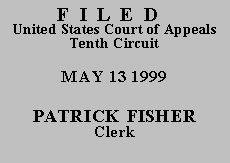

| UNITED STATES OF AMERICA,
vs.
JUAN BLANCO-MUNOZ |
|
Sentencing Guideline § 2L1.2 provides for a base offense level of eight and mandates a sixteen-level increase if the defendant was deported after an aggravated felony conviction. See USSG § 2L1.2(b)(1)(A). The commentary to the guideline defines aggravated felony by reference to 8 U.S.C. § 1101(a)(43), see USSG § 2L1.2 commentary at n.1, which in turn defines aggravated felony as, inter alia, "a theft offense (including receipt of stolen property) or burglary offense for which the term of imprisonment [is] at least one year." § 1101(a)(43)(G).
In seeking the enhancement, the government relied on a prior state court conviction in 1993 for third-degree burglary which carried an indeterminate sentence of zero to five years. We construe this as a sentence for a term of five years. See United States v. Reyes-Castro, 13 F.3d 377, 379-80 (10th Cir. 1993). Mr. Blanco-Munoz was deported in 1994.
Mr. Blanco-Munoz asserts that the term "burglary offense" in § 1101(a)(43)(G) is ambiguous, and argues that the district court erred by failing to look at the state statutory definition of burglary to determine whether it contained the same basic elements found in the Supreme Court's "generic" definition of burglary: "an unlawful or unprivileged entry into, or remaining in, a building or other structure, with intent to commit a crime." Taylor v. United States, 495 U.S. 575, 598 (1990). In Taylor, the Court adopted this uniform definition for the purpose of determining whether a defendant's sentence could be enhanced due to a prior burglary conviction under 18 U.S.C. § 924(e)(2)(B)(ii) (an enhancement under the Armed Career Criminal Act for defendants having three prior convictions for a violent felony or a serious drug offense). The government responds that the burglary definition in Taylor is inapplicable because, unlike the enhancement statute in Taylor, a prior "burglary offense" in 8 U.S.C. § 1101(a)(43)(G) need not be a crime of violence. According to the government, any state burglary conviction for which the sentence imposed is at least one year qualifies as an aggravated felony.
We need not decide between these two positions because, even if we were to adopt Mr. Blanco-Munoz' position, we would still find that his state burglary conviction qualified as an aggravated felony under § 1101(a)(43). The statute under which he was convicted, Utah Code Ann. § 76-6-202 (1990), provides that "[a] person is guilty of burglary if he enters or remains unlawfully in a building or any portion of a building with intent to commit a felony or theft or commit an assault on any person." This definition has the same basic elements as found in Taylor.
However, citing our decision in United States v. Barney, 955 F.2d 635 (10th Cir. 1992), Mr. Blanco-Munoz argues that the Utah statute defines burglary more broadly than does Taylor because "building" is defined, in addition to its ordinary meaning, as "any watercraft, aircraft, trailer, sleeping car, or other structure or vehicle adapted for overnight accommodation of persons or for carrying on business therein." Utah Code Ann. § 76-6-201 (1990). We disagree. The Wyoming statutes at issue in Barney both defined burglary as entering or remaining in a building or, inter alia, a vehicle. See Barney, 955 F.2d at 638-39 (citing Wyo. Stat. § 6-7-201 (1977) and § 6-3-301(a) (1988)). The Utah statute is not so broad -- although "building" is defined more broadly than its ordinary meaning, it is restricted by the requirement that the "other structure or vehicle" be "adapted for overnight accommodation of persons or for carrying on business therein." § 76-6-201. Thus entering or remaining in an ordinary unoccupied car would not qualify as burglary under the statute, and the Supreme Court's concern in Taylor, 495 U.S. at 591, would not apply.
AFFIRMED.
Entered for the Court
Paul J. Kelly, Jr.
Circuit Judge
*. This order and judgment is not binding precedent, except under the doctrines of law of the case, res judicata, and collateral estoppel. This court generally disfavors the citation of orders and judgments; nevertheless, an order and judgment may be cited under the terms and conditions of 10th Cir. R. 36.3.